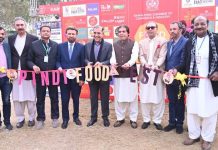BAKU, NOV 10: Azerbaijan draws attention with its projects in Karabakh as the region was liberated in November last year after nearly 30 years of occupation.
The areas liberated from the occupation resemble a large construction site where feverish work has been carried out over the past year.
Tanks, which had been moving on the old roads of the region a year ago, have now been replaced by construction equipment and trucks.
Some 2.2 billion manats ($1.29 billion) were allocated from the 2021 state budget for the reconstruction of the liberated areas.
Fuzuli International Airport was the first major project completed by Azerbaijan that started construction work in the region immediately after the end of the 2nd Karabakh War on Nov. 10, 2020.
Its foundation was laid on Jan. 14, 2021. The airport, described as “Karabakh’s gateway to the world,” was inaugurated on Oct. 26.
Meanwhile, the construction work continues also at Zangilan and Lachin airports.
RECONSTRUCTION OF REGIONS LIBERATED FROM OCCUPATION
The liberated cities need to be rebuilt as all settlements were completely destroyed during the occupation years.
The Azerbaijani government, as a first step, is planning to rebuild the city of Agdam.
Agdam is expected to be a modern city where more than 50,000 people will live in nearly three years.
Meanwhile, a total of 200 houses are being built in the Agali village of Zangilan that has been restructured under the concept of “smart village.”
The reconstruction work in the village, rebuilt with alternative energy sources, ecological heating and smart lighting systems, is expected to be completed by the end of the year.
The first residents are expected to be settled in the village by the beginning of 2022.
OTHER ACTIVITIES IN REGION
Meanwhile, an agricultural park project was launched by Turkish and Azerbaijani investors near the smart Agali village.
Agricultural activities will be carried out with modern technologies on the Dost Agropark Smart Agriculture Campus, the foundation of which was laid by Turkish President Recep Tayyip Erdogan and his Azerbaijani counterpart Ilham Aliyev.
A total of 20,000 hectares of land were cleared of mines, while 50,000 mines and unexploded ordnance planted by the Armenian army were neutralized in the liberated areas.
The Azerbaijani government started work to deliver electricity to the liberated areas while the war was still going on.
Substations were built in Jabrayil, Fuzuli, Zangilan, Gubadli, and Kalbajar districts.
Meanwhile, Azerbaijan is building new highways in the liberated areas.
The total length of the highways, completed and under construction in the region, is 723 kilometers (449 miles).
Authorities aim to complete the construction works of the main highways in the region by 2025.
CONFLICT BETWEEN AZERBAIJAN, ARMENIA
Relations between Azerbaijan and Armenia have been tense since 1991, when the Armenian military occupied Nagorno-Karabakh, also known as Upper Karabakh, a territory internationally recognized as part of Azerbaijan, and seven adjacent regions.
New clashes erupted on Sept. 27 last year, with the Armenian army attacking civilians and Azerbaijani forces and violating several humanitarian cease-fire agreements.
During the 44-day military conflict, Azerbaijan liberated several cities and some 300 settlements and villages that were occupied by Armenia for almost 30 years.
Prior to this, about 20% of Azerbaijan’s territory was under illegal occupation.
The two countries signed a Russian-brokered agreement on Nov. 10 to end the fighting and work toward a comprehensive resolution.
The cease-fire was seen as a victory for Azerbaijan and a defeat for Armenia, whose forces withdrew in line with the agreement.
On Jan. 11 this year, the leaders of Russia, Azerbaijan, and Armenia signed a pact to develop economic ties and infrastructure to benefit the entire region. The deal also included the establishment of a trilateral working group on Karabakh.
















